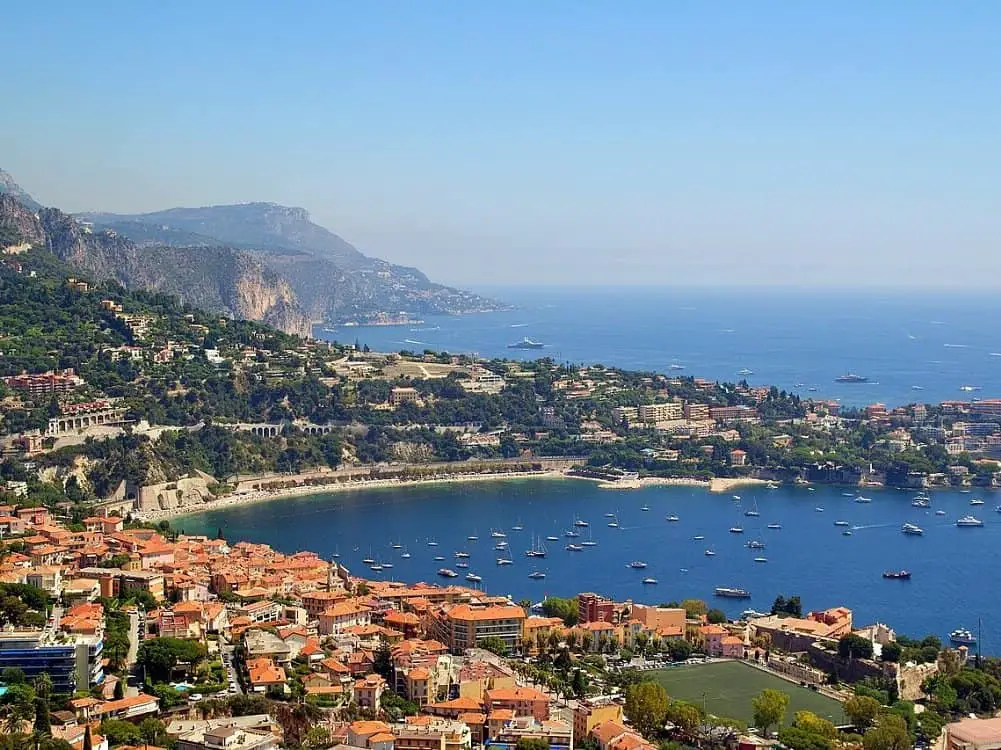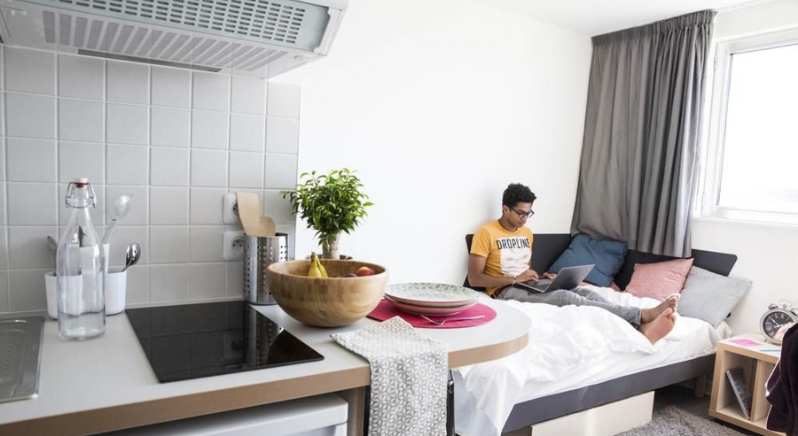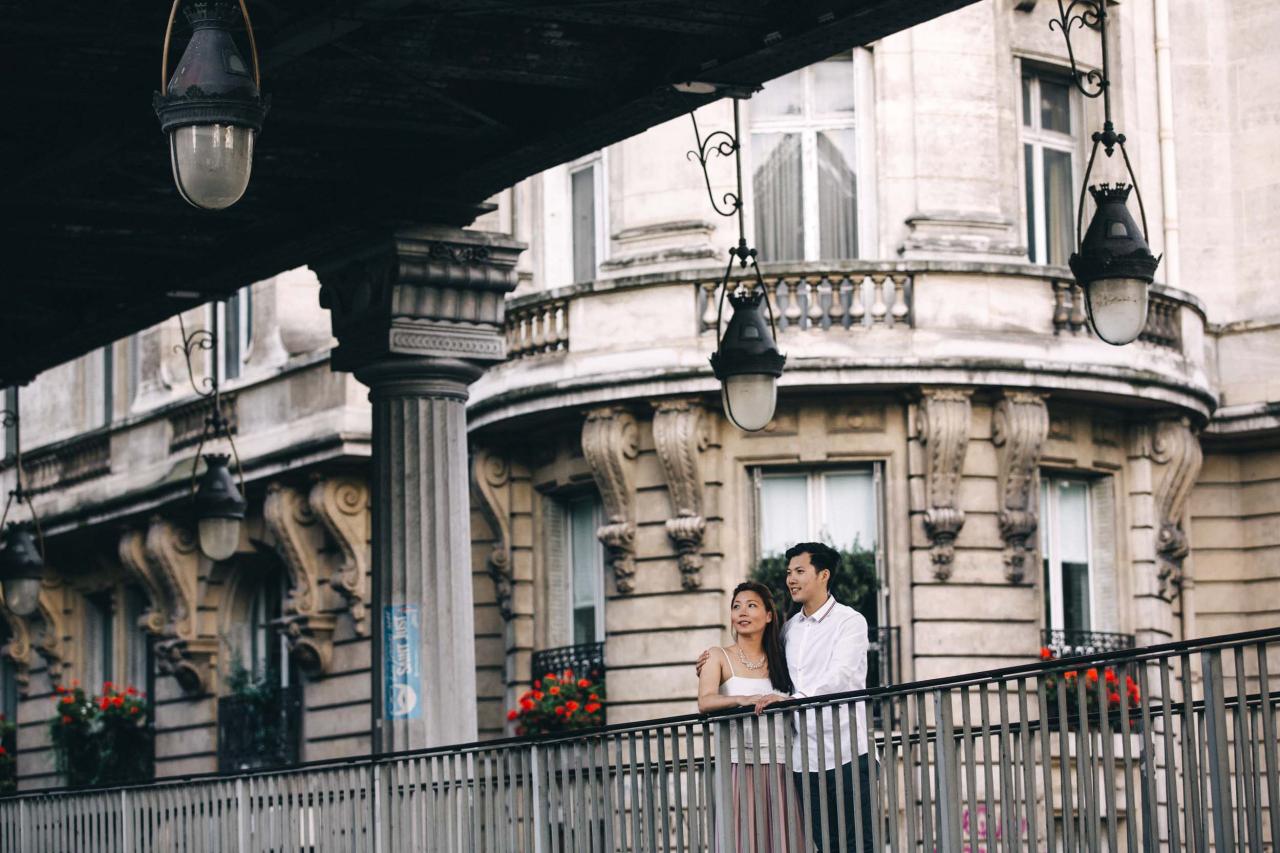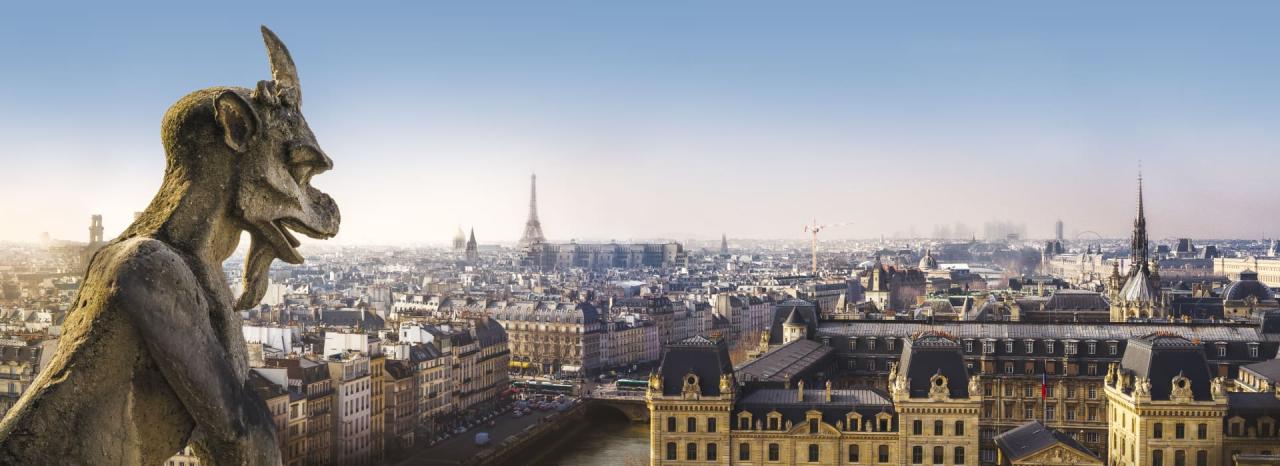Parisian street art beyond Montmartre offers a vibrant tapestry of artistic expression, showcasing the diverse creativity that flourishes across the city’s neighborhoods. This exploration delves into the unique styles, themes, and artists that paint the urban landscape beyond the iconic Montmartre area, highlighting the rich history and evolution of street art in Paris.
From bold murals to intricate stencils, this artistic movement transforms ordinary walls into canvases, each piece telling a story and contributing to the character of its surroundings. The evolution of street art, its connection to neighborhood identity, and the role it plays in attracting tourists are key themes that will be explored in detail.
Introduction to Parisian Street Art Beyond Montmartre
Parisian street art extends far beyond the iconic Montmartre district, blossoming in diverse neighborhoods across the city. This vibrant art form reflects the city’s multifaceted character, mirroring the unique stories and identities of each community. From the gritty urban landscapes to the more residential areas, street art provides a dynamic counterpoint to the traditional Parisian aesthetic. This exploration delves into the evolving street art scene outside Montmartre, examining its historical context, artistic expressions, and prominent figures.The evolution of street art in Paris outside Montmartre is a fascinating journey, marked by shifting artistic styles and themes, reflecting the socio-political climate of each period.
Early influences were often linked to political activism and social commentary, but as the scene matured, it embraced a broader range of artistic expressions, including murals, stencils, and installations.
Historical Context and Evolution
The street art scene in Paris, beyond Montmartre, didn’t emerge overnight. It gradually developed, drawing inspiration from international movements and adapting to the specific urban landscapes of different neighborhoods. The early stages were often characterized by a focus on political messaging and social commentary, mirroring global trends in urban art. As the scene gained momentum, artists began to explore diverse styles and themes, moving beyond solely political statements.
This evolution reflects the city’s embrace of creativity and artistic expression.
Artists and Movements Shaping the Scene
Numerous artists and artistic movements have contributed to the growth of street art outside Montmartre. These include emerging talents, as well as established figures who have moved beyond their initial artistic domains. The collaborative nature of the scene is a crucial factor in its dynamic development. Artists often engage in community projects, fostering connections and encouraging artistic exchange.
Timeline of Key Developments
- 1980s: Initial emergence of street art outside Montmartre, often driven by political and social activism. Early examples involved stenciling and spray painting, reflecting the era’s socio-political climate. Artists like those involved in the broader global street art movement began influencing Paris.
- 1990s: Diversification of styles, with a growing emphasis on visual storytelling and more intricate murals. The introduction of international artists broadened the scope of the movement, enriching the Parisian scene. Collaboration and exchange with other artists became increasingly prominent.
- 2000s-Present: Explosion of creative experimentation. The scene moved beyond simply political statements to encompass a wide range of themes, including social commentary, abstract expression, and figurative representation. The development of community-based projects and workshops became a significant element in the evolution of the movement.
Neighborhood Spotlight
| Neighborhood | Artistic Style | Dominant Themes | Prominent Artists |
|---|---|---|---|
| Belleville | Murals, stencils, installations | Social commentary, urban life, political activism | Various emerging artists, collaborating on large-scale projects |
| Canal Saint-Martin | Stencils, graffiti, murals | Abstract expressionism, street life, playful imagery | Several international artists participating in collaborative projects, and local talents who have risen through the ranks. |
| Ménilmontant | Murals, street art installations, stenciling | Urban narratives, social commentary, community engagement | Known for collaborative projects, showcasing the neighborhood’s rich history and vibrant community. |
| Oberkampf | Graffiti, stenciling, intricate murals | Abstract expressionism, playful imagery, social commentary | Emerging and established street artists with a distinctive approach, reflecting the neighborhood’s artistic spirit. |
Styles and Themes of Parisian Street Art
Beyond the iconic murals of Montmartre, Parisian street art displays a diverse tapestry of styles and themes reflecting the unique character of different neighborhoods. This vibrant art form extends far beyond the well-trodden tourist paths, offering a glimpse into the city’s multifaceted cultural landscape. The artistic expressions vary significantly, ranging from intricate stencils to bold, graffiti-inspired pieces. Common themes weave their way through these diverse expressions, often commenting on social issues, political stances, and the city’s dynamic energy.The styles and themes of Parisian street art outside Montmartre often mirror the neighborhoods’ specific cultural and social dynamics.
Neighborhoods with a strong artistic or counter-culture presence tend to feature more experimental and abstract styles, while areas with a more traditional or working-class character often embrace more straightforward and accessible imagery. The diverse perspectives reflected in this art speak volumes about the city’s vibrant and often contested identity.
Artistic Styles in Different Parisian Neighborhoods
Various artistic styles are prevalent in different Parisian neighborhoods, often reflecting the local culture and social atmosphere. From the intricate stencils of Belleville to the bold, graffiti-inspired pieces of the Marais, the artistic expressions are as diverse as the city itself. The styles often intertwine, creating a unique and dynamic artistic dialogue across the city.
- Belleville often showcases intricate stencils and meticulous details, frequently incorporating local themes and references. This meticulous approach contrasts with the bolder, more immediate impact of graffiti styles prevalent in areas like the Marais.
- The Marais, known for its historic buildings and trendy atmosphere, frequently features a blend of graffiti-inspired works and stencils with political or social commentary. The style tends to be more assertive and visually striking, reflecting the neighborhood’s vibrant and often contested identity.
- In the 19th arrondissement, murals and larger-scale pieces are common, conveying a more narrative approach to street art. This style frequently utilizes bold colors and illustrative techniques to create powerful visual statements.
Common Themes and Messages
Beyond the stylistic differences, recurring themes and messages unite the street art found across various Parisian neighborhoods. These themes often touch upon social issues, political commentary, and reflections on the city’s vibrant and complex identity. The artists utilize their medium to engage with local communities and broader social dialogues.
- A recurring theme in non-Montmartre street art is social commentary. Artists often use their work to address issues like inequality, political injustice, and social exclusion. These themes are reflected through symbolic imagery and slogans that resonate with the neighborhood’s specific concerns.
- Political activism is another common theme. Works of street art often express political viewpoints, ranging from support for specific causes to critiques of governmental policies. These pieces can be found across various neighborhoods, highlighting the interconnectedness of political discourse and urban spaces.
- A significant part of the message conveyed in Parisian street art focuses on the city’s vibrant identity and culture. The artists frequently use their art to celebrate the neighborhood’s history, local traditions, and multiculturalism. This theme reflects the city’s rich and multifaceted character.
Recurring Motifs, Symbols, and Imagery
Specific motifs, symbols, and imagery frequently appear in street art beyond Montmartre, providing a sense of visual continuity across the city. These recurring elements often serve as shorthand for particular themes or messages.
- Images of iconic Parisian landmarks, such as the Eiffel Tower or the Arc de Triomphe, frequently appear in non-Montmartre art, often incorporating them into a commentary on the city’s present or past. This serves as a potent symbol of the city’s legacy and the artist’s perspective on it.
- The use of stylized figures, animals, and abstract forms is common in Parisian street art. These elements often embody a particular theme or narrative, offering an engaging way to convey complex messages without the need for lengthy text. The stylized nature of these images allows for a more universal interpretation.
- Color palettes often reflect the neighborhood’s identity or artistic vision. Bright, bold colors are common in areas known for their vibrant street life, while muted or darker hues might be used in areas with a more contemplative atmosphere.
Comparison of Styles and Themes Across Areas
Comparing the styles and themes across various Parisian neighborhoods reveals interesting patterns and contrasts. The artistic expressions are highly localized, with specific neighborhoods developing their unique visual languages. These localized expressions often reflect the neighborhood’s history, culture, and contemporary social concerns.
| Neighborhood | Style | Dominant Theme |
|---|---|---|
| Belleville | Intricate stencils, meticulous detail | Local history, social commentary |
| Marais | Graffiti-inspired, bold, assertive | Political activism, social commentary, vibrant identity |
| 19th Arrondissement | Large-scale murals, narrative | City’s identity, social issues |
Artists and their Works: Parisian Street Art Beyond Montmartre
Beyond the iconic murals of Montmartre, a vibrant scene of street art flourishes across Paris. Numerous artists, with diverse styles and inspirations, contribute to the city’s artistic tapestry. This exploration delves into the unique approaches and creations of prominent figures outside Montmartre, highlighting the rich artistic narrative of Parisian street art.A multitude of artists are pushing boundaries and challenging conventions with their unique styles, adding a new dimension to the urban landscape.
Their work often reflects their personal experiences and the neighborhoods they inhabit. The inspirations behind these pieces vary widely, from social commentary to personal narratives. This dynamic interplay between artist, subject, and environment creates a compelling and ever-evolving artistic dialogue.
Prominent Street Artists
This section introduces several artists who are actively shaping the Parisian street art scene outside Montmartre. Their contributions enrich the city’s artistic expression, adding a diverse range of perspectives to the ever-evolving street art narrative.
Artistic Approaches and Styles
Parisian street artists exhibit a wide spectrum of styles, ranging from intricate realism to bold abstract expressionism. Techniques vary significantly, reflecting the individual artistic visions of each creator. Some utilize spray paint, others prefer stencils or collage, while a few incorporate mixed media. This diversity underscores the dynamic nature of the art form, demonstrating the creative freedom afforded to street artists.
Artistic Stories and Inspirations
The stories behind street art often intertwine with the artists’ personal experiences and their observations of the urban environment. The artists’ inspirations can be as diverse as their subject matter, drawing from social issues, personal narratives, or simply the beauty of the urban landscape itself.
Artistic Tools and Techniques
Common tools and techniques employed by these artists vary, but spray paint remains a prevalent choice, enabling rapid execution and bold impact. Stencils provide a precise and often intricate approach, allowing artists to convey complex messages. Collage, incorporating found objects, is another frequent method, adding a unique dimension and a sense of social commentary.
Artist Profiles
| Artist Name | Neighborhood | Style | Key Works |
|---|---|---|---|
| Antoine “A.T.” Dubois | Belleville | Figurative Realism | “The Parisian Dream,” “Urban Threads,” series of murals depicting everyday life in Belleville |
| Isabelle “Izzy” Moreau | Canal Saint-Martin | Abstract Expressionism | “Chromatic City,” “Fragments of Light,” a series of large-scale abstract murals incorporating vibrant colors and organic forms |
| Pierre “P-One” Dubois | Oberkampf | Street-inspired Graffiti | “Echoes of the City,” “Urban Symphony,” series of vibrant graffiti pieces with complex geometric patterns, blending graffiti with mural-style themes. |
| Sophie “So-Ph” Leclercq | Marais | Mixed Media Collage | “Ephemeral Memories,” “Stories in Stone,” series of collages incorporating found objects, street signs, and personal mementos to create evocative narratives of the neighborhood. |
The Social and Cultural Impact

Beyond the iconic Montmartre scene, Parisian street art’s influence extends throughout the city, profoundly impacting neighborhoods and fostering a vibrant cultural landscape. This artistic expression, found on walls and alleyways across diverse districts, often reflects the unique character and history of each area, transcending simple aesthetics to become a powerful social and cultural commentary.
Neighborhood Identity and Community Building
Street art significantly contributes to a neighborhood’s identity, acting as a visual marker of its unique spirit. Murals, stencils, and tags can evoke specific themes, memories, or historical narratives, fostering a sense of shared identity among residents. This visual narrative can draw people together, creating a collective pride and belonging, especially in areas undergoing change or experiencing social tensions.
For example, murals celebrating local history or community achievements can unite diverse groups and create a sense of shared heritage.
Street Art and Urban Renewal/Revitalization
Street art can be a powerful catalyst for urban renewal and revitalization. By transforming neglected spaces into vibrant artistic canvases, street art attracts attention and investment, often leading to increased foot traffic, property value appreciation, and economic benefits. This positive impact can extend beyond the immediate area, sparking interest in the neighborhood and drawing tourists and artists. A notable example is the transformation of certain Parisian districts where street art has played a key role in attracting businesses and residents, revitalizing the local economy.
Relationship Between Street Art and Social Norms
Street art frequently challenges or reflects existing social norms. By using visual language to address social issues, political opinions, or cultural perspectives, street artists can spark dialogue and encourage critical thinking. For instance, murals depicting social justice issues, or tackling systemic inequalities, can raise awareness and stimulate debate, ultimately fostering a more conscious and engaged citizenry. The presence of this art can also act as a reminder of the diverse perspectives and experiences within the city.
Social/Cultural Impact of Street Art in Parisian Neighborhoods
| Neighborhood | Social/Cultural Impact |
|---|---|
| Belleville | Known for its vibrant street art scene, often depicting social and political themes, this neighborhood has seen a surge in tourism and local pride. |
| Canal Saint-Martin | This area, with its eclectic mix of residents and businesses, has embraced street art as a defining feature, contributing to its distinctive character and attracting a young, creative population. |
| Ménilmontant | Street art in this neighborhood frequently blends with the existing architectural heritage, showcasing the area’s unique history and artistic spirit. |
| Oberkampf | This area has a long history of artistic expression, and street art has become a prominent aspect of its cultural identity, further enhancing its reputation. |
| Saint-Ouen | Street art in Saint-Ouen often acts as a reflection of the neighborhood’s creativity and diversity, enriching its cultural fabric. |
Street Art and Urban Spaces
Beyond the iconic murals of Montmartre, Parisian street art transforms urban spaces in diverse and dynamic ways. It’s not simply decoration; it’s a dialogue between the artist and the environment, impacting the aesthetics and narrative of the city. This vibrant form of expression adapts to various architectural styles and urban settings, creating a unique tapestry woven into the city’s fabric.
Transformation of Urban Spaces
Street art breathes new life into often-overlooked urban spaces. It can revitalize neglected areas, adding a layer of visual interest and cultural significance. By adding vibrant colors, bold imagery, and thought-provoking messages, street art can significantly enhance the visual appeal of a neighborhood. This can, in turn, attract more residents, businesses, and tourists, fostering a sense of community and pride in the area.
The interplay of the artwork with the existing architecture and urban environment creates a rich visual narrative.
Adaptation to Architectural Styles
Parisian street art demonstrates a remarkable ability to adapt to diverse architectural styles. From the grand facades of Haussmann-era buildings to the more contemporary structures of modern developments, artists find creative ways to integrate their work seamlessly. This includes employing techniques that complement the existing architectural elements, utilizing the building’s structure as a canvas for intricate designs, or contrasting the art with the surrounding architecture to create a striking visual effect.
Impact on Urban Aesthetics
Street art profoundly impacts the urban aesthetic. It injects a dose of vibrancy and creativity into the city’s visual landscape, moving beyond the traditional notions of urban design. The inclusion of bold colors, unique imagery, and diverse artistic styles alters the perception of the city’s character. This contributes to a sense of dynamism and cultural richness. The aesthetic impact extends to the overall atmosphere of the urban environment, transforming mundane spaces into captivating visual experiences.
Parisian street art’s not just confined to Montmartre. For a change of pace, exploring the vibrant murals and graffiti in the surrounding areas offers a unique experience, and some great affordable weekend getaways near Paris are perfect for discovering them. Check out Affordable Weekend Getaways Near Paris for some budget-friendly options, from charming villages to picturesque towns, all brimming with hidden street art gems beyond the city’s main tourist hub.
Interplay with Urban Fabric
The interplay between street art and the urban fabric is a crucial aspect of its impact. Successful street art is often deeply rooted in the surrounding context. It can reflect the history, culture, or even the social issues of the neighborhood. This connection strengthens the bond between the art and the community, enhancing the significance of the work.
For instance, murals depicting local history or social commentary are often embraced and celebrated by residents.
Examples of Street Art Adaptations
| Neighborhood | Location in Neighborhood | Design Features |
|---|---|---|
| Belleville | Rue de la Roquette | Large-scale murals featuring bold, geometric patterns and vibrant colors, often juxtaposed with the historic architecture of the area. |
| Canal Saint-Martin | Along the Canal | Smaller, more intricate pieces featuring abstract designs and often incorporated into the existing urban infrastructure, such as bridges or walls. Often featuring playful, humorous, or socially conscious themes. |
| Ménilmontant | Rue Oberkampf | A mix of styles, including graffiti-style pieces and larger murals, with a focus on themes reflecting the neighborhood’s artistic and cultural character. The art is integrated with the local street culture and lifestyle. |
Street Art and Public Perception
Beyond the iconic Montmartre scene, Parisian street art is a dynamic tapestry woven across diverse neighborhoods. Its reception, however, isn’t uniform, varying considerably based on location and community response. Public perception isn’t static; it evolves as street art becomes more integrated into the urban landscape.Public opinion towards street art in Paris is influenced by a complex interplay of factors.
The artistic merit of the piece, the artist’s reputation, the neighborhood’s existing aesthetic, and even the general atmosphere of the area all play a significant role. Some neighborhoods, historically more conservative, might take time to embrace street art, while others, already accustomed to artistic expression, readily incorporate it into their urban identity.
Evolution of Public Opinion
The evolution of public opinion towards street art in different neighborhoods mirrors the broader societal shift in attitudes. Initially, street art might be viewed with suspicion, especially in areas where traditional aesthetics hold sway. However, as street art projects gain visibility and recognition, public opinion often softens. Successful integration is often tied to the quality of the art, its appropriateness for the surroundings, and how it is presented to the community.
This evolution is not a universal trend; certain areas may still exhibit resistance to more contemporary forms of street art.
Factors Influencing Public Acceptance or Criticism
Several factors shape the public’s reception of street art. The perceived quality of the artwork, its aesthetic alignment with the neighborhood’s existing character, and the artist’s reputation are key influencers. Effective community engagement and transparency in the approval process can also significantly impact public acceptance. Conversely, a lack of consultation or the perceived imposition of art on a community can lead to criticism.
Examples from other cities show that well-planned, inclusive projects, featuring feedback from local residents, generally garner greater acceptance. Conversely, hastily implemented or poorly executed projects often lead to negative responses.
Street Art as a Catalyst for Dialogue, Parisian street art beyond Montmartre
Street art, by its very nature, serves as a catalyst for dialogue and discussion. The vibrant imagery often prompts reflection on social and political issues, inspiring conversations among residents and visitors alike. Public art projects can serve as a meeting point, a shared experience that promotes a sense of community and understanding. This dialogue can lead to a more nuanced and informed understanding of both the art and the community it represents.
Public Perception in Parisian Neighborhoods
| Neighborhood | Public Perception |
|---|---|
| Belleville | Generally positive, with a history of embracing artistic expression. Street art is often seen as a positive addition to the neighborhood’s vibrant character. |
| Canal Saint-Martin | Initially mixed, but gradually becoming more accepting. The neighborhood’s bohemian spirit and artistic ethos contribute to a welcoming attitude towards street art. |
| Latin Quarter | Generally accepting, but with a greater emphasis on maintaining historical architectural integrity. Street art integration must carefully balance historical context and contemporary artistic expression. |
| Le Marais | Highly receptive to street art due to the area’s rich history of artistic innovation and diverse population. Street art is frequently integrated into the neighborhood’s overall aesthetic. |
| Montmartre | Generally positive, as street art is intrinsically linked to the neighborhood’s artistic heritage. The existing reputation for artistic expression fosters a high level of acceptance. |
Street Art and Tourism

Street art has become a significant draw for tourists beyond the iconic Montmartre district, transforming Parisian neighborhoods into vibrant and engaging cultural landscapes. This burgeoning art form is increasingly recognized as a powerful tool to attract visitors, boost local economies, and enrich the overall visitor experience. Its impact extends beyond simply adorning walls; it shapes the narratives surrounding Paris and its various districts, contributing to a richer understanding of the city’s unique character.
Attracting Tourists Outside Montmartre
Street art’s appeal transcends geographical boundaries, captivating visitors with its diverse styles, themes, and artistic expression. The murals and graffiti found throughout the city, especially in neighborhoods like Belleville, Canal Saint-Martin, and the Marais, are attracting increasing numbers of art enthusiasts, photographers, and social media users eager to document and share these artistic treasures. This increased visibility fosters a sense of discovery and exploration for tourists, encouraging them to venture beyond the well-trodden paths of the city center.
Economic Benefits for Local Communities
The presence of street art can translate into tangible economic benefits for local communities. Businesses in these neighborhoods benefit from increased foot traffic, attracting new customers and boosting local economies. Tourists drawn to the art are more likely to visit local cafes, shops, and restaurants, creating a ripple effect of economic activity. This phenomenon is exemplified by the growth of the street art scene in the Canal Saint-Martin area, which has spurred development in the surrounding areas, leading to a renewed sense of vitality and vibrancy.
Enhancing the Visitor Experience
Street art can significantly enhance the visitor experience by adding an element of surprise and discovery to a trip. The unexpected beauty and creativity of the murals and graffiti often lead to spontaneous photo opportunities and memorable encounters. The murals act as interactive installations, sparking conversations and fostering a deeper appreciation for the city’s cultural richness. Furthermore, street art often tells stories of the neighborhood’s history, social fabric, and artistic heritage, providing visitors with unique insights into the local context.
Shaping Tourist Narratives of Paris
Street art contributes significantly to the narratives tourists form of Paris. The murals and graffiti often reflect the cultural identity of specific neighborhoods, providing a lens through which visitors can understand the social and artistic dynamism of those areas. The art often speaks to the city’s diverse population and its evolving identity, creating a narrative that extends beyond the typical tourist attractions.
This allows for a more nuanced understanding of the city beyond the traditional monuments.
Neighborhood-Specific Street Art Contributions
| Neighborhood | Tourist Attractions | Street Art Contribution |
|---|---|---|
| Belleville | Parks, historical buildings, vibrant street life | Murals depicting local history, social commentary, and artistic expressions, attracting art lovers and photographers. |
| Canal Saint-Martin | Canal, trendy cafes, boutiques | Graffiti and murals adding a layer of urban art to the picturesque canal area, enhancing the area’s appeal to artists and tourists. |
| Marais | Historic district, shops, art galleries | Street art reflecting the neighborhood’s rich history and diverse artistic scene, attracting art enthusiasts and showcasing the cultural dynamism of the Marais. |
Ultimate Conclusion

In conclusion, Parisian street art beyond Montmartre reveals a dynamic and multifaceted artistic scene, rich in history, social impact, and aesthetic appeal. Beyond the familiar Montmartre, the city’s urban fabric is enlivened by a spectrum of styles and themes, reflecting the diverse artistic talents and community spirit of Paris’s neighborhoods. The vibrant interplay of art and urban spaces, and the evolving public perception of this art form, makes it a compelling subject of study.
Question Bank
What are the most common artistic styles found in these neighborhoods beyond Montmartre?
Various styles are prevalent, including murals, stencils, tags, and even installations, adapting to the architectural and environmental context of each neighborhood.
How does street art contribute to neighborhood identity?
Street art often becomes a visual representation of a neighborhood’s history, culture, and community, fostering a sense of belonging and pride.
Are there any specific examples of street art that has revitalized a neighborhood?
Certain projects have successfully transformed areas, creating a more attractive and vibrant environment for residents and visitors, stimulating local economies.
What are some factors influencing public perception of street art in different neighborhoods?
Factors include the specific style of the art, the location, and the existing community sentiment towards public art. Public opinion often evolves as art becomes more integrated into the urban landscape.






Leave a Reply